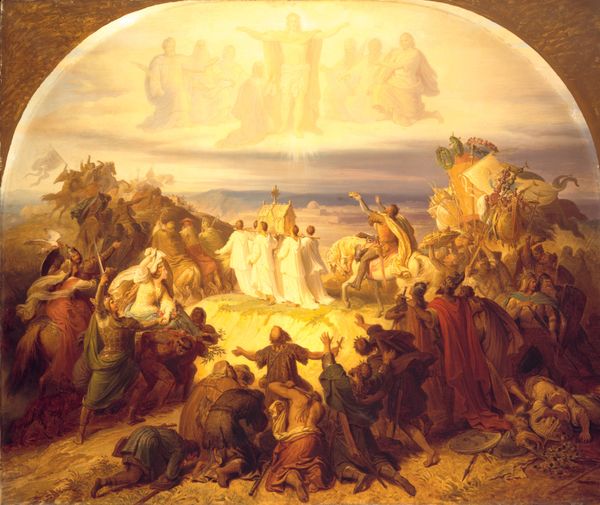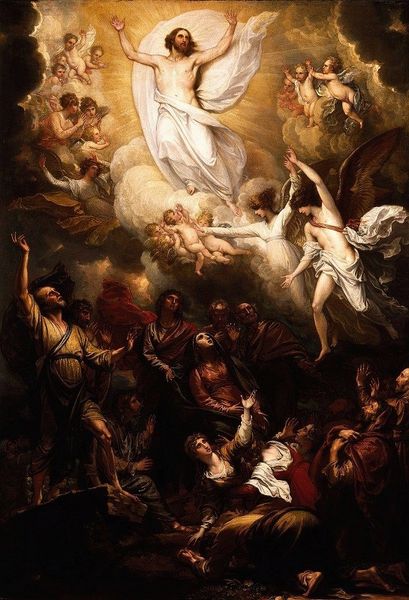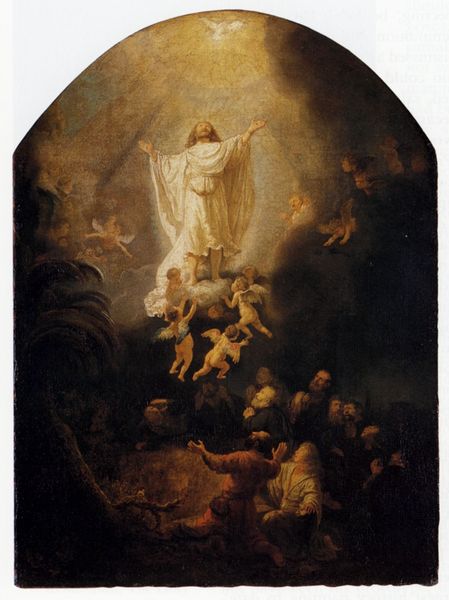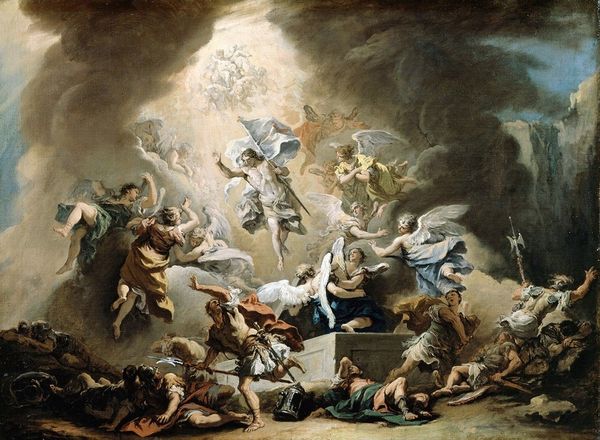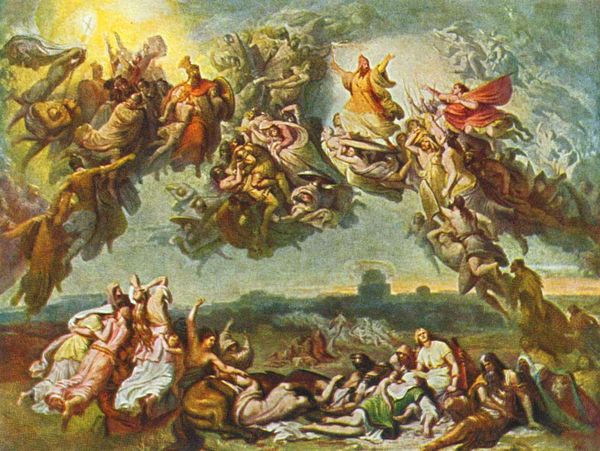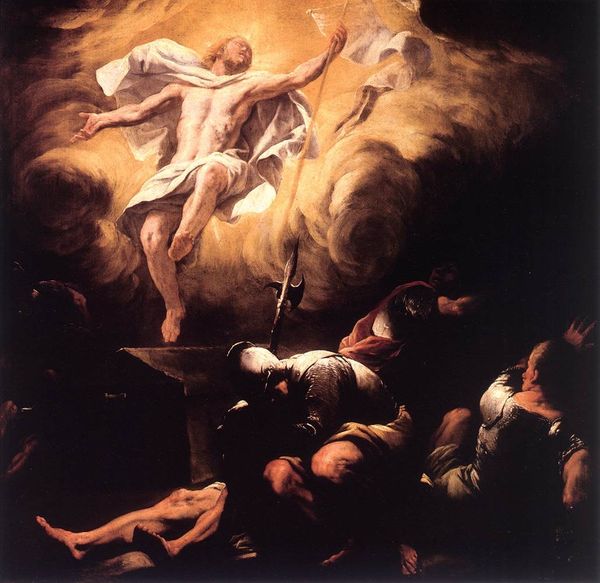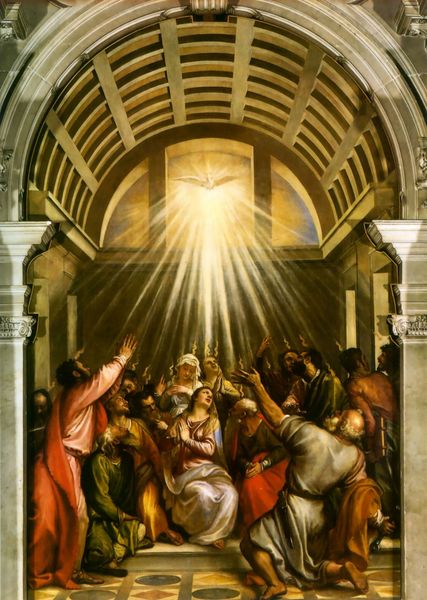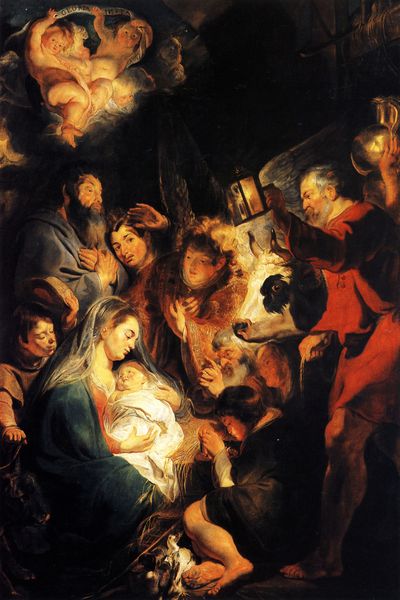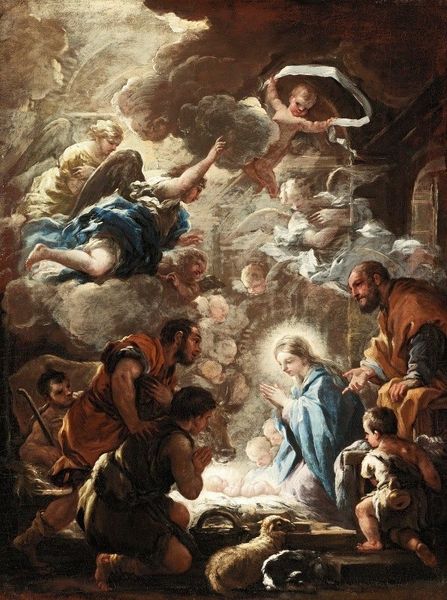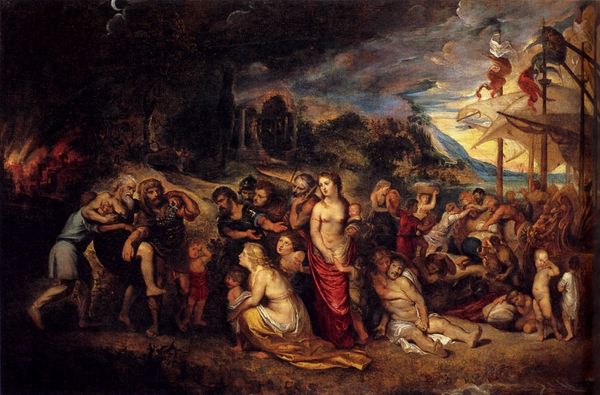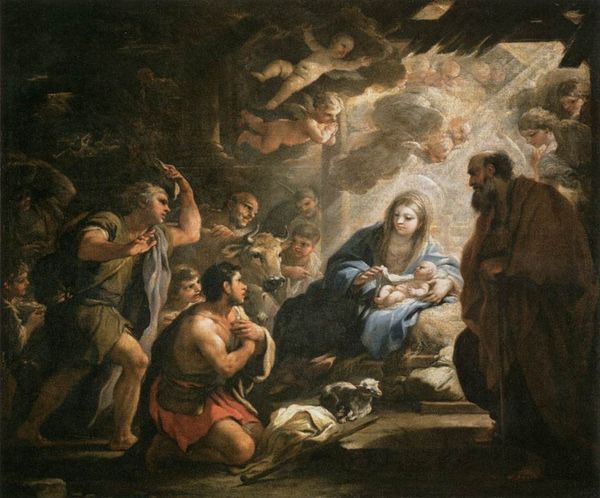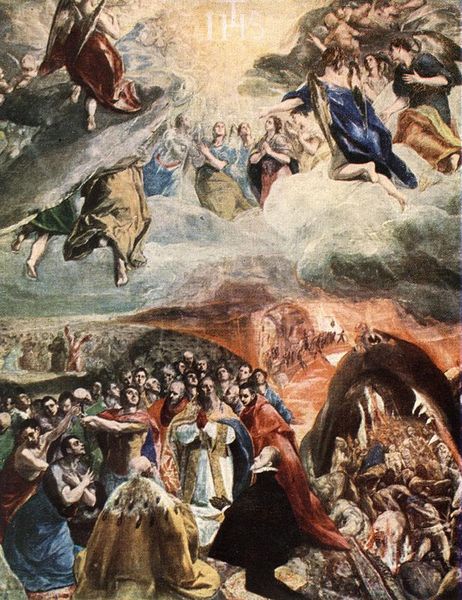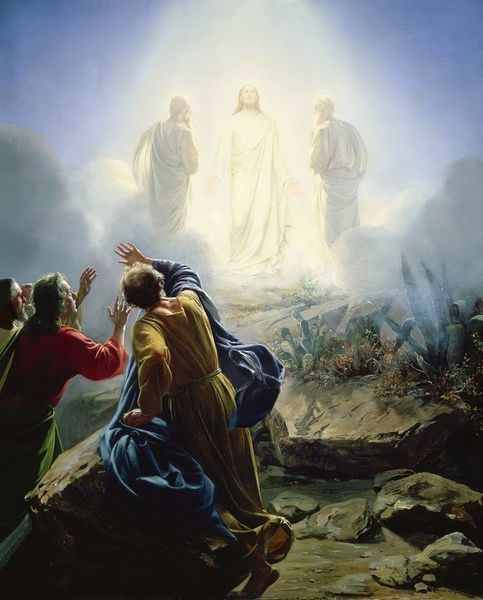
The Destruction of Jerusalem by Titus 1846
0:00
0:00
wilhelmvonkaulbach
Neue Pinakothek, Munich, Germany
painting, oil-paint
#
narrative-art
#
painting
#
oil-paint
#
classical-realism
#
figuration
#
oil painting
#
romanticism
#
history-painting
#
academic-art
#
mixed media
Copyright: Public domain
Curator: Wilhelm von Kaulbach’s massive oil on canvas, "The Destruction of Jerusalem by Titus," completed in 1846, presents a dramatic historical tableau. It currently resides in the Neue Pinakothek in Munich. Editor: My immediate impression is one of overwhelming chaos, punctuated by stark contrasts in light and shadow. The sheer number of figures vying for attention creates a sense of intense emotional turmoil. Curator: Indeed, the visual drama echoes the social and political upheavals that served as the historical context. The mid-19th century was ripe with revolution, reflected perhaps in Kaulbach's turbulent depiction of conflict. This was, after all, commissioned for a grand museum intending to educate and edify through depictions of momentous historical events. Editor: From a formal perspective, the composition is remarkable for its balance despite the disarray. Observe how Kaulbach uses diagonals to guide the eye from the burning city in the upper left to the Roman soldiers on the right, and then down to the suffering figures in the foreground. The angelic figures in the clouds also provide an interesting formal counterpoint to the carnage below. What does that suggest to you? Curator: They could serve to soften the brutality. Consider Kaulbach's process: the layers of glazing he employed, for example, creating a visual tension—beauty laid over horror, much like the sanitized history that often masks the realities of war. The means of creating that picture become very compelling. Editor: Interesting thought. Notice how the figures, rendered in classical realism, almost seem staged despite the obvious intent to capture the scene's rawness? The use of oil paint here is key—its ability to render fine details while creating luminous effects enhances the drama. The angelic beings nearly glow. It's a skillful orchestration of materials to elicit an emotional response. Curator: Absolutely. Thinking of it that way adds complexity. It brings forward important tensions, illuminating how academic history paintings of this era mediated complex social and material factors to define both national identity and morality for its audiences. Editor: Right. It prompts one to appreciate the meticulous crafting of every element in order to present not just a historical record, but a moral lesson too, wouldn't you say? Curator: Indeed. Considering these components allows for a greater and more intricate understanding. Editor: Precisely. Understanding what defines this as academic and Realist artwork.
Comments
No comments
Be the first to comment and join the conversation on the ultimate creative platform.
